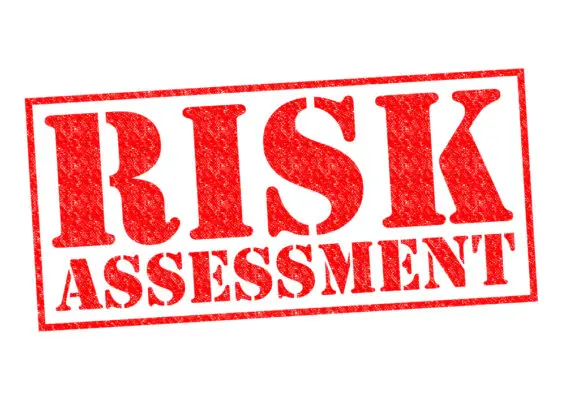Contract risk assessment is crucial in any business transaction involving evaluating and mitigating potential risks associated with contractual agreements.
A contract risk assessment checklist is valuable in this process, providing a systematic approach to identify, analyze, and manage risks that may arise during contract negotiations and implementation.
This checklist ensures that all relevant aspects of a contract are thoroughly examined, including legal, financial, operational, and reputational risks.
Creating a contract risk assessment checklist involves several steps, such as defining the scope and objectives of the assessment, identifying potential risks, determining the likelihood and impact of each risk, and developing appropriate risk mitigation strategies.
This comprehensive approach helps organizations proactively address potential risks and protect their interests.
Contract risk assessment is paramount as it helps organizations make informed decisions, minimize potential losses, and ensure compliance with legal and regulatory requirements.
Systematically evaluating and managing risks, businesses can enhance their contractual relationships, safeguard their resources, and maintain their competitive advantage.
In this article, we will discuss the steps involved in creating a contract risk assessment checklist and highlight the significance of contract risk assessment in today’s dynamic business environment.

What is contract risk assessment?
Contract risk assessment is a systematic evaluation process that identifies and analyzes potential risks associated with contractual agreements, aiming to mitigate uncertainties and protect the interests of all parties involved.
This process involves a detailed examination of various factors, such as:
- The financial performance of the parties involved.
- Contract reviews.
- Contractual terms.
- Limitation of liability.
- Regulatory compliance.
Compliance risks, such as regulatory compliance and contractual obligations, are carefully examined during the contract review process. This meticulous and detail-oriented approach ensures that all potential risks, including financial risks, are accounted for and managed effectively.
Contract risk assessment involves thoroughly examining contract documentation and using a contract risk assessment checklist, which helps identify and evaluate risks.
By conducting a comprehensive contract risk assessment, organizations can proactively identify and address potential risks, minimizing the impact on their operations and protecting their interests.
Contract risk assessment is crucial in contract risk management, enabling organizations to make informed decisions and ensure regulatory compliance.
What is a contract risk assessment checklist?
A comprehensive checklist can be used to evaluate and analyze potential risks associated with contractual agreements. This contract risk assessment checklist serves as a tool to identify and assess various risks arising from contractual terms.
Examining the contractual terms, the checklist helps organizations develop a contract risk management strategy and a risk mitigation plan.
The checklist typically includes categories such as contract review processes, risk identification, risk analysis, risk evaluation, and a limitation of liability section.
It aids in ensuring that all critical elements of contract risk assessment are considered and addressed. Including a compliance risk assessment questionnaire in the checklist further enhances its effectiveness in identifying potential compliance risks.
Steps to Create a Compliance Risk Assessment Questionaire
To create an effective tool for evaluating and analyzing potential risks associated with contractual agreements, one can develop a detailed checklist that includes evaluating adherence to regulations and ensuring organizational compliance.
A compliance risk assessment questionnaire can be a valuable tool in this process.
Here are four steps to create a compliance risk assessment questionnaire:
1. Identify the key regulations and requirements: Understand the applicable laws, regulations, and industry standards relevant to the organization and its contractual agreements.
2. Determine the risk factors: Assess the potential risks associated with each contractual agreement. Consider factors such as financial risks, reputational risks, and legal risks.
3. Develop a comprehensive set of questions: Create a list of questions that will help evaluate compliance with regulations and identify potential risks. These questions should be specific, measurable, and relevant to the organization’s operations.
4. Test and refine the questionnaire: Pilot the questionnaire with a sample of contractual agreements and assess its effectiveness. Refine the questions based on feedback and make necessary adjustments to ensure the questionnaire accurately captures compliance risks.
Creating a compliance risk assessment questionnaire requires meticulous attention to detail and a thorough understanding of the organization’s contractual agreements and regulatory requirements.
Why Contract Risk Assessment is Important
Conducting a thorough evaluation of contractual agreements is crucial because it identifies potential vulnerabilities and ensures adherence to regulations and industry standards.
Contract risk assessment plays a vital role in this process by systematically analyzing the terms and conditions of contracts to identify any potential risks or non-compliance issues.
By using a compliance risk assessment questionnaire, organizations can assess compliance with mandatory provisions, identify potential risk areas, and ensure that contracts align with legal and regulatory requirements.
Contract risk assessment also helps identify any gaps or ambiguities in contract terms that may require clarification or negotiation.
Contract management software can streamline the contract review process and facilitate efficient contract lifecycle management.
Legal counsels play a crucial role in conducting contract risk assessments by leveraging their expertise and knowledge in contract law to identify potential risks and provide recommendations for contract improvement.
Overall, contract risk assessment is important as it helps organizations mitigate potential risks, ensure compliance, and protect their interests.
Steps in Contract Risk Assessment Checklist
This discussion focuses on the steps involved in a contract risk assessment checklist.
The first step is to evaluate your obligations outlined in the contract, ensuring that you understand and can meet them.
Next, reviewing the schedule is crucial to ascertain realistic and achievable timelines.
Examining the terms of the contract is essential to identify any potential risks or conflicts.
Additionally, evaluating location-specific obligations and risks is necessary to understand the potential impact of local laws and regulations.
Lastly, assessing the contract partner’s reputation, financial stability, and track record is vital to determine their reliability and ability to fulfil their obligations.
1. Evaluate Your Obligations
Assessing one’s obligations in the context of compliance requires a comprehensive evaluation of the legal and regulatory framework that applies to the organization.
This evaluation can be facilitated using a compliance risk assessment questionnaire, which helps identify potential compliance issues and assess the organization’s compliance with regulatory requirements.
When evaluating obligations, it is essential to consider contract obligations and contractual language. A contract risk assessment template or a contract review checklist template can be used to assess contract noncompliance risks systematically.
These tools enable organizations to identify areas where there may be a lack of compliance and take necessary steps to mitigate such risks.
Additionally, evaluating the limitation of liability helps ensure the organization is adequately protected from potential legal and financial consequences. Thus, a meticulous and thorough evaluation of obligations is crucial in managing compliance risks effectively.
2. Review the Schedule
Reviewing the schedule allows for a comprehensive analysis of time and resource allocation, ensuring efficient and effective compliance management.
This step is crucial in the compliance risk assessment questionnaire process as it helps identify any gaps or overlaps in contract obligations and deadlines.
Using reviewing the schedule, organizations can better understand the financial performance and potential risks associated with contract management. Additionally, reviewing the schedule enables organizations to identify critical milestones, such as contract renewal or termination dates, and allocate resources accordingly.
It also helps negotiate and monitor contracts by providing a clear timeline for contract provisions and deadlines.
3. Review the Terms
To conduct a comprehensive compliance risk assessment, it is crucial to review the terms associated with the compliance risk assessment questionnaire. By thoroughly examining the terms, organizations can ensure that all aspects of their compliance program are effectively addressed.
The terms of the questionnaire encompass a wide range of factors, including legal requirements, industry regulations, and internal policies. This meticulous examination allows organizations to identify potential compliance gaps and areas of improvement.
Moreover, reviewing the terms assists in establishing a common understanding and language for all stakeholders involved in the compliance risk assessment process.
Organizations can accurately assess their compliance posture and develop appropriate mitigation strategies by providing a detailed understanding of the terms.

4. Evaluate Location-Specific Obligations and Risks
Evaluating the location-specific obligations and risks involves analyzing the specific legal requirements, industry regulations, and internal policies that apply to a particular geographic area.
This step is crucial in the compliance risk assessment questionnaire as it helps identify potential risks and ensure that the organization meets all necessary obligations.
To evaluate location-specific obligations and risks effectively, consider the following:
– Legal requirements: Determine the applicable laws and regulations in the specific location, such as labour laws, environmental regulations, and data protection laws.
– Industry regulations: Identify any specific regulations or standards that apply to the industry in that location, such as financial regulations or healthcare compliance requirements.
By carefully examining these factors, organizations can comprehensively understand the location-specific obligations and risks, allowing them to develop appropriate compliance strategies and minimize potential compliance-related issues.
5. Assess the Contract Partner
Assessing the contract partner involves thoroughly evaluating their qualifications, capabilities, and track record to ensure alignment with the organization’s objectives and compliance standards.
This evaluation is a crucial step in the compliance risk assessment questionnaire process.
| Factors to Consider | Evaluation Criteria |
|---|---|
| Capabilities | Assess the contract partner’s expertise, resources, and capacity to fulfill contractual obligations. |
| Track Record | Evaluate the contract partner’s past performance, including their ability to meet deadlines and deliver quality work. |
| Financial Stability | Analyze the contract partner’s financial statements, creditworthiness, and ability to withstand financial challenges. |
The questionnaire should include specific questions to assess the contract partner’s compliance history, financial stability, reputation, and legal and regulatory compliance.
Additionally, it should evaluate the partner’s internal controls, policies, and procedures relating to compliance risks.
The assessment should consider the partner’s experience in similar projects, ability to meet contractual obligations, and commitment to ethical business practices. Furthermore, reviewing any past incidents or breaches related to the contract partner is essential.
By thoroughly evaluating the contract partner, organizations can mitigate compliance risks and ensure a successful and compliant partnership.
In the context of contract risk, several key components and considerations must be addressed. Firstly, adherence to quality standards is crucial in ensuring that all parties involved in the contract comply with agreed-upon guidelines and specifications.
This helps mitigate potential disputes and costly consequences that may arise from non-compliance.
Furthermore, a robust risk management department is essential in identifying and managing any potential risks associated with the contract. This includes evaluating the vendor management risk exposure and implementing mitigation processes to minimize any negative impact on operations.
Another important aspect is the need for compelling and creative content in contracts. A skilled creative content writer can ensure that the language used is concise, clear, and captures the intended message effectively.
This is especially important in complex agreements such as construction or consultant agreements, where all parties involved must clearly communicate and understand the terms and conditions.
Additionally, having a customizable calendar reminder system can help ensure that important contract milestones and deadlines are not overlooked. This not only helps in meeting contractual obligations but also aids in effective contract monitoring and performance management.
Lastly, adequate insurance coverage, such as commercial insurance, is crucial in protecting against any consequential damages arising from contract breaches or other unforeseen events. This provides an added layer of security and safeguards the interests of all parties involved in the contract.
Contract risk management requires a holistic approach encompassing various components such as adherence to quality standards, risk management, compelling content, customizable reminders, and insurance coverage.
In addressing these aspects, organizations can minimize the potential negative consequences and ensure that contracts are effectively managed throughout their lifecycle.
6. Determine Mandatory Provisions
To ensure a comprehensive and effective contract, it is crucial to identify and include essential mandatory provisions for both parties involved. This can be achieved through the compliance risk assessment questionnaire, which aids in determining the necessary provisions.
The questionnaire is designed to assess the potential risks associated with the contract and identify areas that require specific provisions for compliance purposes. Using this tool, organizations can evaluate the potential risks and determine the mandatory provisions needed to mitigate those risks.
This process involves a meticulous and detail-oriented approach to consider all relevant aspects.
The questionnaire helps identify potential legal, financial, operational, and reputational risks, allowing organizations to tailor the contract and include provisions that adequately address these risks.
7. Consider Optional Provisions
After determining the mandatory provisions in a compliance risk assessment questionnaire, it is essential to consider the inclusion of optional provisions.
Optional provisions are additional clauses that organizations may choose to include in the questionnaire to assess further and mitigate compliance risks. These provisions are not mandatory but can provide valuable insights into specific areas of risk that are unique to the organization.
Optional provisions may cover various topics, such as data protection, cybersecurity, or environmental sustainability. Including these provisions allows organizations to tailor the questionnaire to their specific needs and address any additional compliance risks they may face.
However, it is important to carefully evaluate the relevance and necessity of optional provisions to avoid unnecessary complexity or duplication in the assessment process.
8. Look for Risky Provisions
Identifying potentially problematic provisions ensures a comprehensive and effective contract strategy. When conducting a contract risk assessment, it is important to thoroughly review the contract provisions to identify any potential risks or areas of concern.
A contract review checklist can be helpful in this process, as it provides a systematic approach to assess the contract documentation.
Some of the risky provisions to look for include:
- Limiting liability clauses may limit the party’s ability to seek compensation for damages.
- Consequential damages clauses may impose additional financial obligations on the party in case of a breach.
- Provisions related to contract renewal may affect the party’s ability to continue the contractual relationship.
By carefully examining these provisions, organizations can better manage legal risks and ensure the overall effectiveness of their contracts.
– Ambiguous language: Clauses that are vague or open to interpretation can lead to miscommunication and potential compliance breaches.
– Inadequate legal protection: Contracts should include provisions that protect the organization from legal risks, such as indemnification clauses or limitation of liability.
– Non-compliant clauses: Look for provisions that may conflict with legal or regulatory requirements, industry standards, or internal policies.
– Lack of contract review: Failing to review contracts thoroughly can result in overlooked risks and potential non-compliance.
9. Ensure Regulatory Compliance
To ensure the overall effectiveness and legitimacy of the contract, it is imperative to prioritize regulatory compliance, adhering to all applicable laws, regulations, and industry standards.
Failing to comply with regulatory requirements can lead to significant legal and financial consequences for all parties involved. Therefore, including regulatory compliance as a key aspect of the contract risk assessment checklist is crucial.
This involves thoroughly reviewing the contractual language to identify any compliance issues and ensuring that the contract includes necessary clauses to address and mitigate these risks.
Additionally, contract monitoring and ongoing compliance reviews should be implemented to ensure continued adherence to regulations throughout the contract’s duration.
By incorporating regulatory compliance into the contract risk management process, organizations can minimize the potential for non-compliance and safeguard themselves against potential penalties and reputational damage
| Risk Mitigation Plan | Description | Financial Consequences |
|---|---|---|
| Limitation of Liability | Addressing the extent of financial responsibility in case of breaches or disputes | Potential for costly legal proceedings and financial damages |
| Compliance Issues | Identifying and addressing any potential non-compliance with applicable laws and regulations | Fines, penalties, and reputational damage |
| Contract Review Checklist | Systematically reviewing the contract to ensure it aligns with regulatory requirements | Ensures regulatory compliance and minimizes legal risks |
The questionnaire helps increase compliance by addressing contractual compliance issues and highlighting areas where improvements can be made. It enables organizations to identify and resolve legal risks, ensuring all contracts align with regulatory requirements and ethical standards.
10. Track All Changes
Organizations must establish a robust system to track and document all changes made throughout the compliance process to manage regulatory requirements and contractual obligations effectively.
One way to achieve this is through a compliance risk assessment questionnaire. This questionnaire is a structured tool to identify potential compliance risks and assess their impact on the organization’s operations.
By tracking all changes made in relation to compliance, organizations can ensure that they have a clear record of actions taken and decisions made. This allows for transparency, accountability, and the ability to demonstrate compliance to regulatory authorities and stakeholders.
Additionally, tracking all changes provides organizations with valuable data that can be used to analyze trends, identify areas for improvement, and enhance the overall effectiveness of their compliance program.
By implementing a system to track all changes, organizations can effectively manage their compliance obligations and mitigate potential risks.
Frequently Asked Questions
What are the potential consequences of not conducting a contract risk assessment?
Not conducting a contract risk assessment can lead to negative outcomes, such as financial losses, legal disputes, damaged reputation, and ineffective risk management. Identifying and mitigating potential risks through a systematic assessment process is essential.
How often should a contract risk assessment be conducted?
Contract risk assessments should be conducted regularly to ensure ongoing mitigation of potential risks.
The frequency of assessments should be determined by factors such as the complexity of the contract, industry standards, and any changes in the business or legal environment.
What factors should be considered when assessing contract risks?
When assessing contract risks, it is important to consider factors such as the financial stability of the parties involved, the clarity and specificity of contract terms, the potential for external events to impact performance, and the enforceability of the contract in different jurisdictions.
Are there any industry-specific guidelines or regulations for contract risk assessment?
Industry-specific guidelines and regulations for contract risk assessment exist in various sectors. These guidelines provide specific criteria and standards for evaluating and mitigating risks, ensuring compliance with industry-specific laws and regulations.
What is the role of contract risk assessment in the overall risk management process?
Contract risk assessment plays a crucial role in an organisation’s overall risk management process. It helps identify, evaluate, and mitigate potential contract risks, ensuring compliance, protecting assets, and minimizing financial and legal liabilities.

Conclusion
Contract risk assessment is crucial for organizations to identify and mitigate potential risks associated with contractual agreements. A contract risk assessment checklist is a tool that helps in systematically evaluating and managing these risks.
This checklist typically includes steps such as:
- Identifying contract parties.
- Reviewing contract terms.
- Assessing legal and regulatory compliance.
- Evaluating financial and operational risks.
Contract risk assessment is important as it enables organizations to make informed decisions, protect their interests, and ensure compliance with contractual obligations.
Organizations can minimise potential risks by following a comprehensive contract risk assessment checklist and maximize their chances of successful contract management.
In conclusion, a compliance risk assessment questionnaire is essential for organizations to identify and evaluate potential risks associated with contracts.
By following the steps outlined in the contract risk assessment checklist, organizations can thoroughly analyse their contracts and ensure compliance with legal and regulatory requirements.
This meticulous and detail-oriented approach to contract risk assessment is crucial in mitigating potential risks and safeguarding the organization’s reputation and financial stability.
Organizations should prioritize contract risk assessment to manage and mitigate compliance risks effectively.

Chris Ekai is a Risk Management expert with over 10 years of experience in the field. He has a Master’s(MSc) degree in Risk Management from University of Portsmouth and is a CPA and Finance professional. He currently works as a Content Manager at Risk Publishing, writing about Enterprise Risk Management, Business Continuity Management and Project Management.

